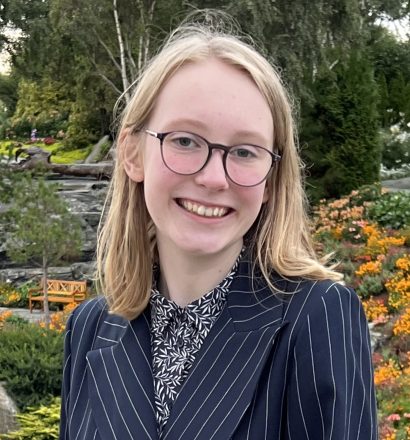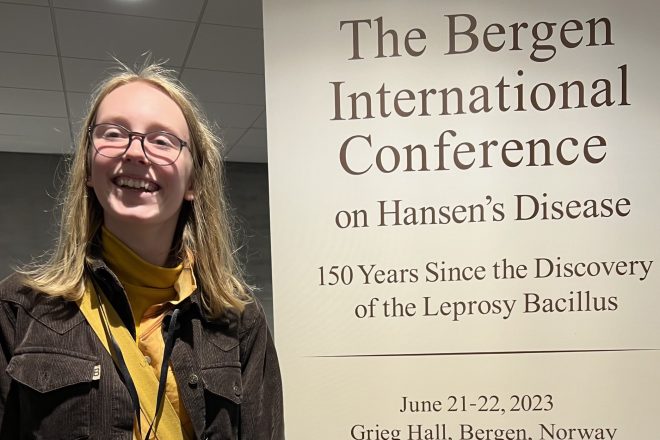Blog: 150th anniversary of the discovery of the Leprosy Bacillus
Author

Marion Jørgensen - Student Volunteer
This year, 2023, marked the 150th anniversary of the discovery of the bacteria that causes leprosy, Mycobacterium leprae. It was discovered by the Norwegian doctor Gerhard Armauer Hansen on 28 February 1873. This discovery, plus the work that Hansen did on leprosy transmission, hugely impacted the international medical and leprosy community. His discovery that a microorganism was the cause of a chronic disease was a breakthrough in medical history and the starting point of modern leprosy science.
Looking back at the celebrations around the 100th anniversary
For the 100th anniversary of the discovery of the Mycobacterium leprae, many countries made stamps celebrating Dr Hansen. The stamps featured Dr Hansen’s face, a drawing of the bacteria and often a microscope to symbolize him using the microscope to discover the bacteria. Countries that did this include: Cameroon, Comoro Islands, Benin (Dahomey), France, Gabon, India, Ivory Coast, Laos, Mali, Niger, Nigeria, Norway, Pakistan, Senegal and Togo. All of these countries (except France and Norway) are still challenged by ongoing transmission of leprosy bacteria. Norway issued the stamps as a celebration for Hansen. France, where leprosy was eliminated in the 1920, likely issued the stamps because leprosy is still endemic in French colonies and former colonies. I know of only two countries that had issued stamps related to leprosy prior to the 100th anniversary: Belgium in 1964 for World Leprosy Day and Cuba in 1948 in conjunction with hosting the International Leprosy Congress.[1]
Issuing postage stamps celebrating the 100th anniversary of Hansen’s discovery shows how much of an effect his research had on the international community. The 10th International Leprosy Congress was held in Bergen for the anniversary in 1973. Approximately 700 participants from 80 different countries attended. At the time, the congress was the largest ever dedicated to leprosy. Presentations highlighted advances in microbiology, experimental therapeutics, epidemiology, and leprosy control up to that time.[2]


150th anniversary International Conference
For the 150th anniversary, Sasakawa Leprosy (Hansen’s Disease) Initiative and the University of Bergen in Norway hosted a conference named The Bergen International Conference on Hansen’s Disease: 150 Years Since the Discovery of the Leprosy Bacillus. During this conference, organizations and individuals fighting leprosy around the world came together to talk about their experiences and research. They discussed leprosy with a focus on three different pillars: medical, social, and historical. Delegates also took a tour of the leprosy museum and former hospital in Bergen to get a feel for how leprosy was treated in the past in Norway. The museum set up a new exhibit in occasion of the anniversary that focused on the several prerequisites for Hansen’s discovery and the ethics of his methods.
I attended this conference as someone who had had no formal experiences with leprosy. I learned a lot and it helped me connect with NLR. Liesbeth Mieres, Coordinator Research and Advocacy of NLR, was a part of the panel discussion for medical challenges within the theme “how to promote interruption of transmission”. Conferences like these are very important to work together to eliminate leprosy. By sharing their experiences, everyone could learn something new and form new collaborations.
The 150th anniversary since Hansen’s discovery of M. leprae is a good opportunity to reflect upon both how far leprosy research has come, and how far we still have to go to eliminate this ancient disease and truly make it a part of our history.
[1] S. R. Wood, A Short History of History of Leprosy in Postage Stamps, Proceedings of the Royal Society of Medicine 67 (1974): 717-719. https://journals.sagepub.com/doi/pdf/10.1177/003591577406700812
[2] Byron S. Tepper, Current Leprosy Research: A Report on the 10th International Leprosy Congress, The Journal of Infectious Diseases, Vol. 130, No. 4 (Oct., 1974): 441-443. https://www.jstor.org/stable/30106156?seq=1